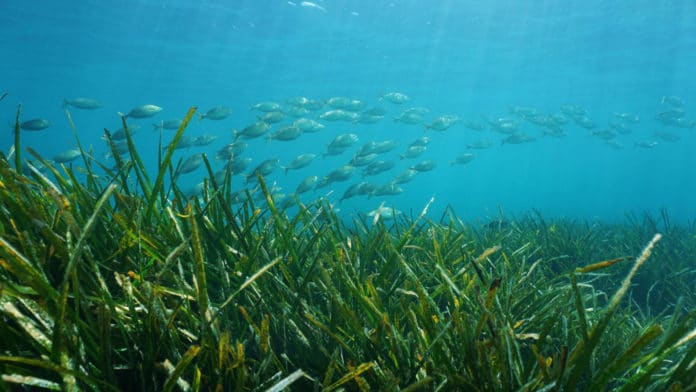Seagrasses- marine plants- are one of the most efficient global sinks of carbon dioxide on Earth. They stores almost twice as much carbon as forests on land and 35 times as fast.
Recently, scientists from the Max Planck Institute for Marine Microbiology in Bremen, Germany, found that seagrasses release massive amounts of sugar into their soils, called rhizosphere. They release more than 1 million tons of sucrose- at least 80 times higher than previously measured in marine environments.
Study authors noted, “Such high concentrations of sugar are surprising.”
Manuel Liebeke, head of the Research Group Metabolic Interactions at the Max Planck Institute for Marine Microbiology said, “To put this into perspective: We estimate that worldwide there are between 0.6 and 1.3 million tons of sugar, mainly in the form of sucrose, in the seagrass rhizosphere. That is roughly comparable to the amount of sugar in 32 billion cans of coke!”
Nicole Dubilier, Director at the Max Planck Institute for Marine Microbiology explains, “Seagrasses produce sugar during photosynthesis. Under average light conditions, these plants use most of the sugars they produce for their metabolism and growth. But under high light conditions, for example at midday or during the summer, the plants produce more sugar than they can use or store. Then they release the excess sucrose into their rhizosphere. Think of it as an overflow valve.”
Microbes are sugar lovers: they consume any free sugars in their environment. But, they do not consume sucrose. Why?
To figure this out, scientists conducted experiments in which they added henolics isolated from seagrass to the microorganisms in the seagrass rhizosphere. Indeed, much less sucrose was consumed compared to when no phenolics were present.
First, author Maggie Sogin, who led the research off the Italian island of Elba and at the Max Planck Institute for Marine Microbiology said, “What we realized is that seagrass, like many other plants, release phenolic compounds to their sediments. Red wine, coffee, and fruits are full of phenolics, and many people take them as health supplements. What is less well known is that phenolics are antimicrobials and inhibit the metabolism of most microorganisms.”
Surprisingly, despite the difficult conditions, a small group of microbial specialists can thrive on sucrose. Sogin speculates that these sucrose specialists can not only digest sucrose and degrade phenolics but also provide benefits to the seagrass by producing nutrients it requires to develop, such as nitrogen.
Sogin said, “Such beneficial relationships between plants and rhizosphere microorganisms are well known in land plants, but we are only just beginning to understand the intimate and intricate interactions of seagrasses with microorganisms in the marine rhizosphere.”
Liebeke said, “Looking at how much blue carbon – that is carbon captured by the world’s ocean and coastal ecosystems – is lost when seagrass communities are decimated, our research clearly shows: It is not only the seagrass itself but also the large amounts of sucrose underneath live seagrasses that would result in a loss of stored carbon. Our calculations show that if the sucrose in the seagrass rhizosphere was degraded by microbes, at least 1,54 million tons of carbon dioxide would be released into the atmosphere worldwide.”
Sogin said, “That’s roughly equivalent to the amount of carbon dioxide emitted by 330,000 cars in a year. Seagrasses are rapidly declining in all oceans, and annual losses are estimated to be as high as 7% at some sites, comparable to the loss of coral reefs and tropical rainforests. Up to a third of the world’s seagrass might have been lost. We do not know as much about seagrass as we do about land-based habitats. Our study contributes to our understanding of one of the most critical coastal habitats on our planet and highlights how important it is to preserve these blue carbon ecosystems.”
Journal Reference:
- E. Maggie Sogin, Dolma Michellod, Harald Gruber-Vodicka et al. Sugars dominate the seagrass rhizosphere. Nature Ecology & Evolution (2022). DOI: 10.1038/s41559-022-01740-z
